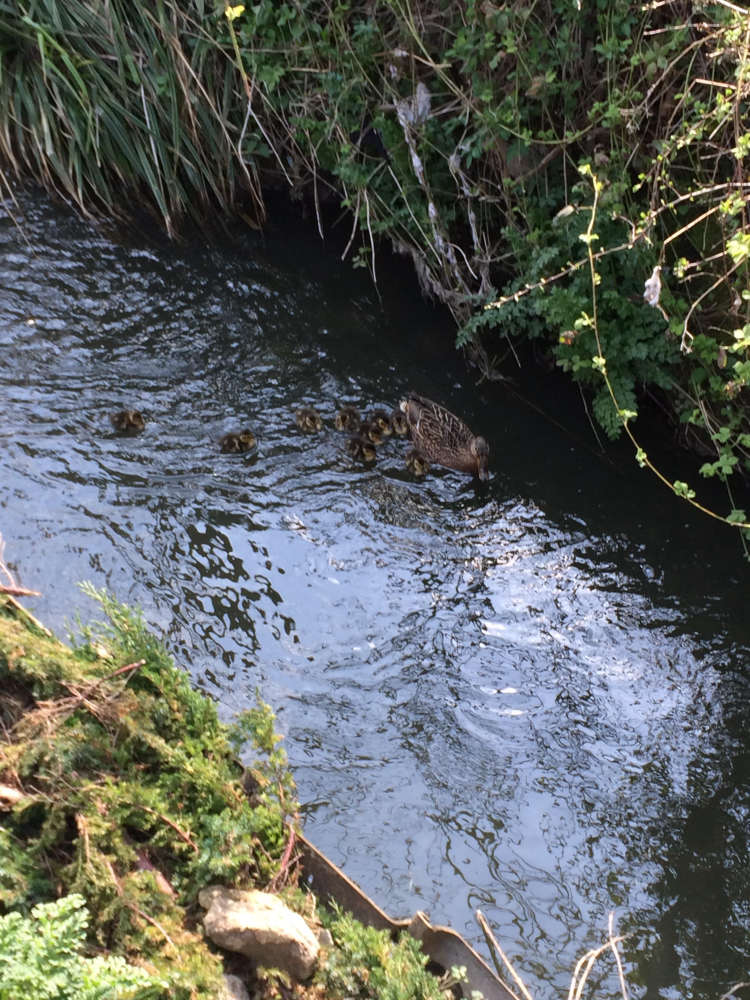
Otters, trout and heron are among wildlife that have returned to a stream in County Durham as Northumbrian Water works to help improve the health of waterways across the region.
As part of a new project by Northumbrian Water, data-gathering monitors are being installed across rivers, streams and becks across the North East that will help monitor river quality and allow teams to respond quicker to any problems or issues.
The monitors, which are around the size of small suitcase and are solar-powered, measure a series of key elements in the watercourse every 15 minutes, and sensors can flag any potential changes to conditions in quick-time, allowing for action to be taken.
So far, 31 monitors have been installed in areas including Houghton-le Spring and Rainton, and over the next four years 390 more will be deployed in locations all the way from north Northumberland to North Yorkshire.
When all are in place, they will help the water company collect data and information from hundreds of different local watercourses and enhance understanding of the environmental impact of storm overflow events and sewage treatment works - ultimately helping to reduce pollution and improve the environment.
By protecting local rivers, streams and becks, it is hoped that this work will continue to encourage wildlife to return. And that’s what has happened in Houghton-le-Spring, County Durham.
Late last year, Northumbrian Water customer Dave Ford had a monitor installed in his rear garden, which backs onto a stream.
The vital data gathered in Dave’s garden is helping Northumbrian Water teams understand the quality of the stream, and monitoring for any impact from storm overflows, as well as issues like misconnections or local pollution from other sources.
Dave, who has lived in the property for 20 years, says he has seen a drastic change in the beck over time.
He said: “20 years ago whenever there was a storm, a storm overflow at the end of the garden used to open and after it had passed I’d have to walk up and down the stream, clearing rubbish.
“That doesn't happen anymore. Over those 20 years the stream has changed quite dramatically and we now even have trout visiting regularly from about May to November.
“I've seen a number of otters in the stream, and I also know that it's got a very healthy population of freshwater shrimp.
“Compared with 20 years ago this is now a perfectly alive stream which gives me a great deal of pleasure.”
Richard Warneford, Wastewater Director at Northumbrian Water added: “It’s fantastic to see the wildlife returning in these areas.
“We’re very passionate about the environment, and we’re really proud to be part of this project along with the communities in our region, as well as our partners.”
This £51m investment in the installation of the monitors comes as part of the company’s wider £1.7 billion planned spend over the next five years to improve the wastewater network and the health of the local environment.
It forms part of Northumbrian Water’s River Pledge 4 commitment – one of nine environmental pledges that the company is working on as part of its vision for improving coasts and rivers.
For more information on Northumbrian Water’s Vision for Coasts and Rivers, go to - https://www.nwg.co.uk/



 Halloween Fundraiser Fun Run at Thorpe Farm Centre
Halloween Fundraiser Fun Run at Thorpe Farm Centre
 Tudhoe children’s club looking forward with new backing from the Banks Group
Tudhoe children’s club looking forward with new backing from the Banks Group
 Cast of Mary Poppins visit Beamish Museum
Cast of Mary Poppins visit Beamish Museum
 Create magical family memories at Santa’s Grotto this Christmas at the National Museum of the Royal Navy Hartlepool
Create magical family memories at Santa’s Grotto this Christmas at the National Museum of the Royal Navy Hartlepool
 Local Lass Katrina Fisher Crowned IMMAF Bantamweight World Champion
Local Lass Katrina Fisher Crowned IMMAF Bantamweight World Champion



